Best Autumn Carrot Varieties to Plant in July UK: Complete Growing Guide
Transform your autumn garden with the perfect carrot varieties for July planting in the UK. Our comprehensive guide covers the best varieties, planting techniques, and care tips for a successful winter harvest.
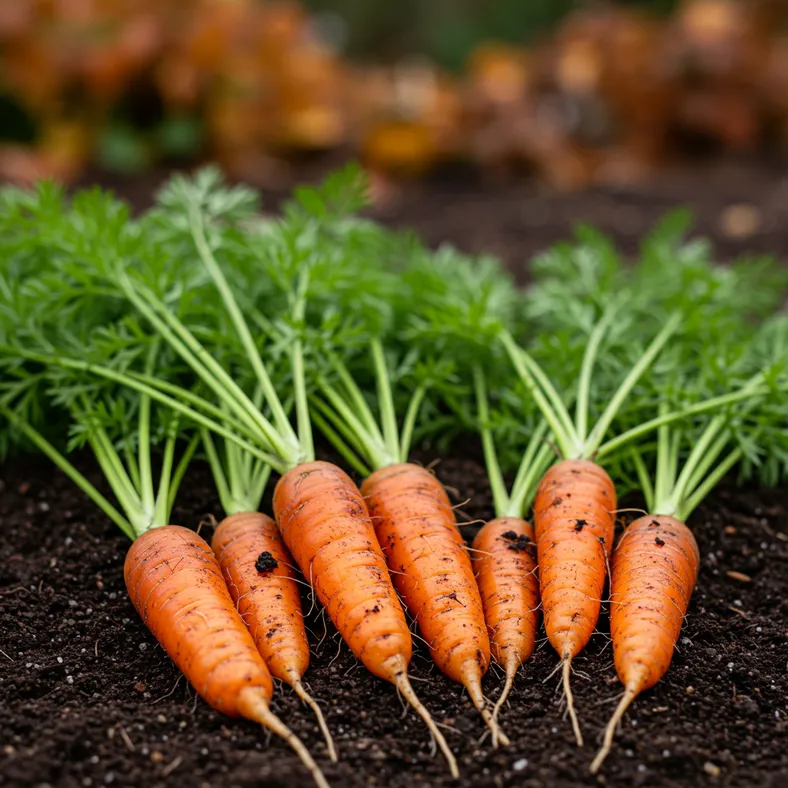
- Why Plant Autumn Carrots in July
- Best Autumn Carrot Varieties for UK Growing
- Soil Preparation and Planting Requirements
- Sowing Techniques for Maximum Germination
- Protecting Your Crop from Pests and Diseases
- Watering and Feeding Throughout the Growing Season
- Harvesting and Storage for Winter Use
- Troubleshooting Common Problems
July marks a crucial window for sowing autumn carrot varieties in the UK, offering gardeners the opportunity to enjoy fresh, homegrown carrots well into winter. Unlike their spring counterparts, autumn carrots develop exceptional sweetness as cooler temperatures concentrate their natural sugars, making them perfect for hearty winter meals and long-term storage.
Choosing the right varieties and understanding optimal planting techniques can transform your autumn garden into a productive winter larder. This comprehensive guide explores the best autumn carrot varieties for UK conditions, essential planting tips, and proven strategies for maximising your harvest success.
Why Plant Autumn Carrots in July
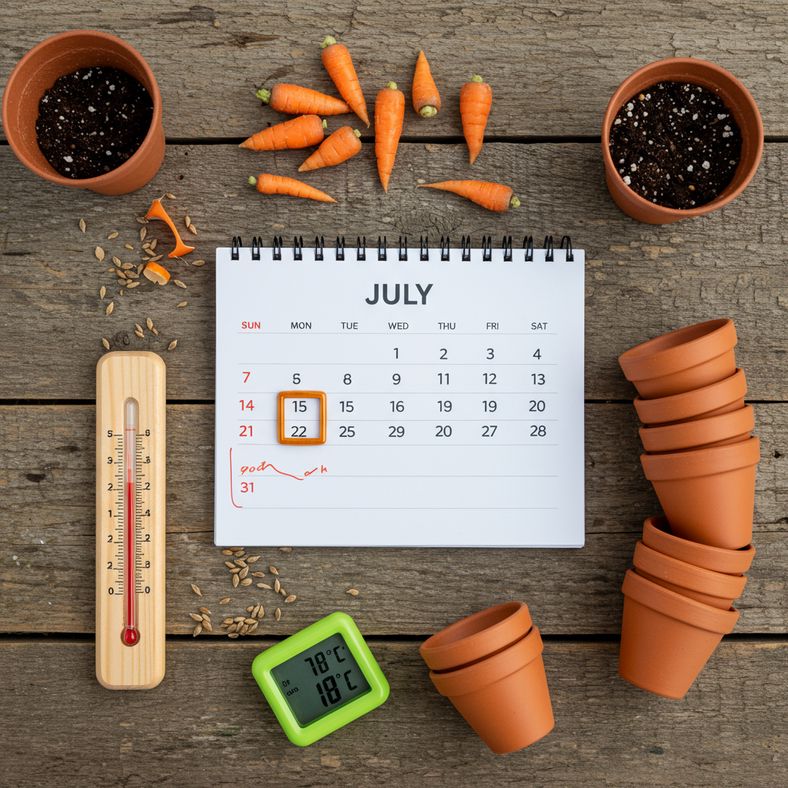
July represents the sweet spot for autumn carrot sowing in the UK, offering numerous advantages over spring plantings. The warm soil temperatures (typically 15-20°C) ensure rapid germination, while the extended daylight hours promote vigorous early growth before autumn's shorter days arrive.
Autumn carrots develop superior flavour profiles compared to their spring counterparts. As temperatures drop through autumn and winter, carrots convert starches to sugars as a natural antifreeze mechanism, resulting in remarkably sweet, tender roots. This process, known as 'cold sweetening,' makes autumn carrots highly prized by chefs and home cooks alike.
Additionally, July sowings avoid the first generation of carrot fly (active April-June), significantly reducing pest pressure. The cooler autumn weather also means less frequent watering requirements, making these crops relatively low-maintenance once established.
For gardeners seeking extended harvests, autumn carrots can remain in the ground throughout winter in most UK regions, providing fresh vegetables when shop-bought produce is at its most expensive. A simple covering of straw or fleece protects roots from hard frosts while maintaining soil workability for harvesting.
Best Autumn Carrot Varieties for UK Growing
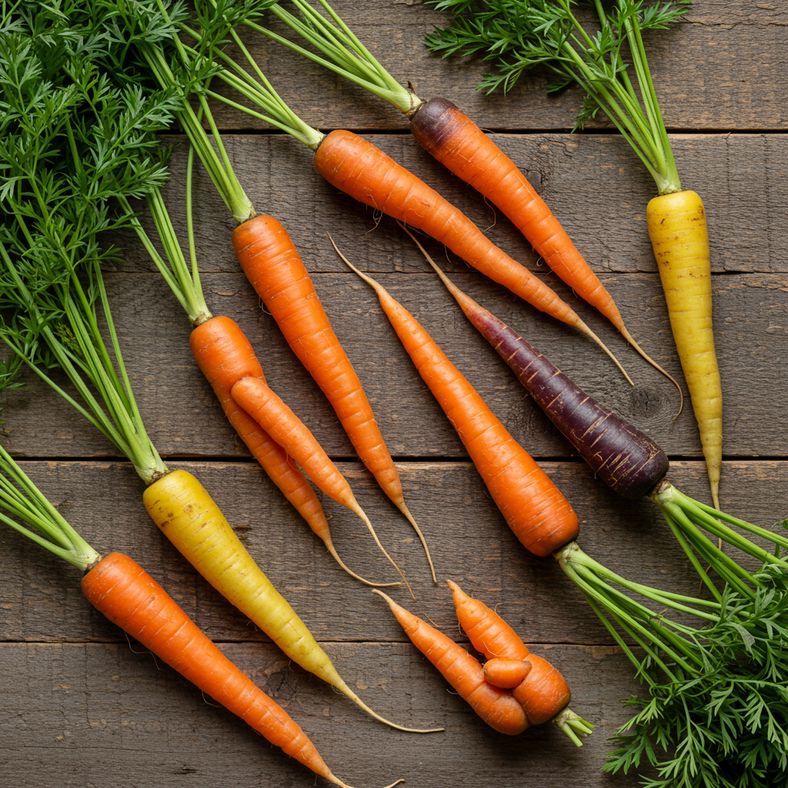
Selecting appropriate varieties is crucial for successful autumn carrot cultivation in the UK. The following varieties have proven exceptionally well-suited to British growing conditions and July sowings:
Autumn King remains the gold standard for autumn carrot production in the UK. This heritage variety produces large, tapering roots up to 25cm long with exceptional cold tolerance and storage capabilities. Its robust nature makes it ideal for heavier soils, while the superior flavour intensifies with cold exposure.
Bangor offers remarkable reliability in challenging conditions, producing uniform, cylindrical roots perfect for storage. This variety demonstrates excellent resistance to splitting and maintains quality throughout winter, making it a favourite among commercial growers and allotment holders.
Flakkee varieties, including 'Flakkee 2' and 'Flakkee Giant', produce enormous roots reaching 30cm in length when grown in deep, well-prepared soil. These late-season varieties require the full growing season but reward patience with exceptional yields and storage life.
Rothild provides an excellent balance of size, flavour, and cold tolerance. This variety produces consistent, wedge-shaped roots with smooth skin and bright orange flesh, perfect for both fresh eating and storage.
For those seeking exceptional flavour, Purple Haze offers striking purple exteriors with orange cores, while Yellowstone provides unique yellow roots with remarkable sweetness. These colourful varieties add visual interest to winter harvests while maintaining the cold tolerance essential for autumn sowings.
When selecting varieties, consider your soil type and intended use. Heavy clay soils favour shorter, broader varieties like 'Parmex' or 'Paris Market', while sandy soils can accommodate longer varieties like 'Autumn King' or 'Flakkee'.
Soil Preparation and Planting Requirements
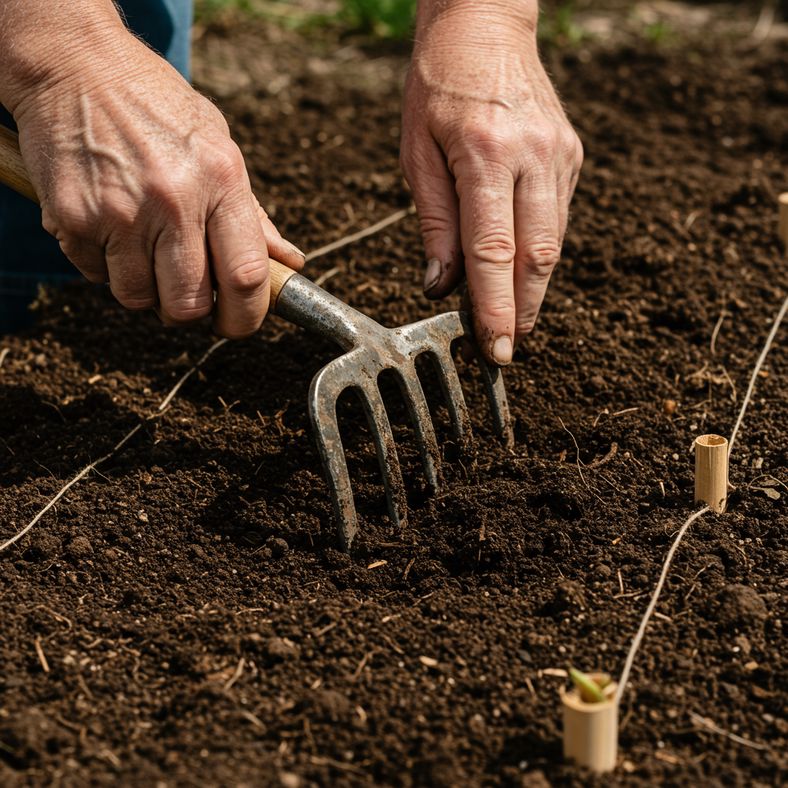
Successful autumn carrot cultivation begins with thorough soil preparation. Carrots thrive in well-draining, stone-free soil with a pH between 6.0-7.0. Heavy clay soils benefit from incorporating sharp sand or well-rotted compost to improve drainage and prevent waterlogging during wet autumn and winter months.
Begin preparation by removing all weeds and debris from the planting area. Fork the soil to 30cm depth, breaking up any compacted layers that might impede root development. Remove stones larger than 1cm, as these can cause forking or stunted growth in developing roots.
Avoid fresh manure applications, as these can cause forking and excessive leaf growth at the expense of root development. Instead, incorporate well-rotted compost or leaf mould worked into the soil several weeks before sowing.
Create drills 1-2cm deep and 15-20cm apart using a draw hoe or garden line. Water the drills thoroughly before sowing, ensuring consistent moisture penetration. This pre-watering technique promotes even germination and reduces the risk of soil cap formation.
For container growing, use deep pots (minimum 25cm) filled with quality, peat-free multipurpose compost. Quality vegetable seeds combined with proper soil preparation ensures optimal growing conditions for your autumn carrots.
Sowing Techniques for Maximum Germination
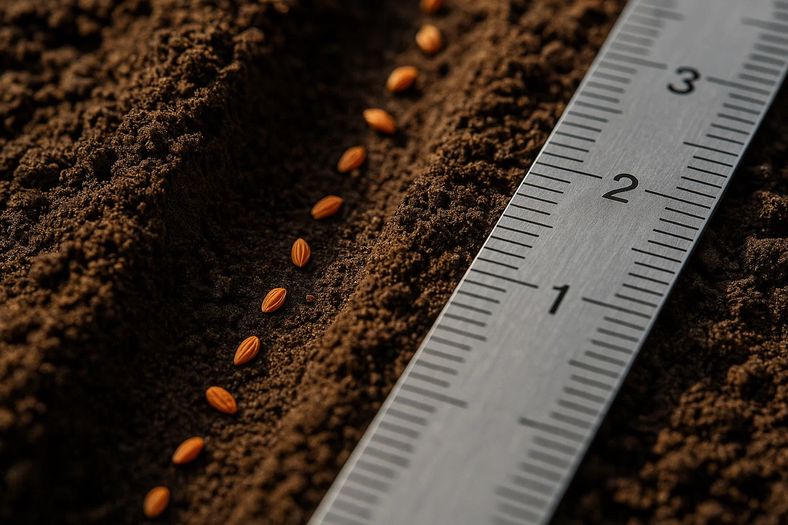
Proper sowing technique significantly impacts germination success and final crop quality. Carrot seeds are notoriously slow to germinate, typically taking 14-21 days in July conditions, requiring patience and consistent moisture management.
Sow seeds thinly along prepared drills, aiming for 2-3cm spacing between seeds. This reduces competition during early growth and minimises thinning requirements later. Cover seeds lightly with fine soil or vermiculite, ensuring coverage depth doesn't exceed twice the seed diameter.
Immediately after sowing, water gently using a fine rose attachment to avoid disturbing seeds. Maintain consistent soil moisture throughout the germination period, checking daily during dry spells. Consider covering rows with horticultural fleece during particularly hot periods to prevent soil drying and temperature extremes.
Mark row ends clearly with labels indicating variety and sowing date. This proves invaluable for tracking germination progress and planning successive sowings. Consider companion planting with quick-germinating radishes to mark rows and break soil surface tension.
For enhanced germination rates, consider pre-germinating seeds indoors. Place seeds between moist tissue paper in a warm location (18-21°C) for 3-5 days until tiny white roots appear, then sow immediately in prepared drills. This technique can reduce germination time by 7-10 days.
Premium Autumn King carrot seeds offer excellent germination rates and cold tolerance, making them ideal for July sowings in UK conditions.
Protecting Your Crop from Pests and Diseases

Autumn carrot crops face unique challenges requiring targeted protection strategies. While July sowings avoid the first carrot fly generation, the second generation (active August-September) poses significant risks to developing roots.
Install fine mesh barriers immediately after sowing to prevent carrot fly access. Use mesh with holes no larger than 0.6mm, securing edges firmly to prevent gaps. Maintain barriers throughout the growing season, only removing for essential maintenance activities.
Carrot fly adults are attracted by the distinctive carrot scent released during thinning and weeding. Conduct these activities during calm, dry conditions when flies are less active, preferably in early morning or evening. Replace protective barriers immediately after disturbance.
Companion planting with strong-scented herbs like rosemary, sage, or wormwood can help mask carrot scent from searching flies. Interplanting with onions or leeks provides additional protection while maximising space utilisation.
Slug and snail protection becomes crucial during autumn's damp conditions. Apply organic slug pellets or create beer traps around vulnerable seedlings. Encourage natural predators like ground beetles and thrushes by maintaining diverse garden habitats.
Quality garden secateurs ensure clean cuts during thinning operations, reducing plant stress and disease entry points.
Watering and Feeding Throughout the Growing Season

Autumn carrots require different watering strategies compared to spring crops, with emphasis on consistent moisture rather than frequent light watering. Establish deep watering patterns early in the season to encourage extensive root development.
Water deeply once or twice weekly rather than daily light sprinklings. This encourages roots to grow downward seeking moisture, resulting in longer, straighter carrots. Apply 2-3cm of water per week during dry periods, adjusting for natural rainfall.
Monitor soil moisture at 10cm depth using a soil probe or long screwdriver. Soil should feel consistently moist but never waterlogged. Mulching around plants with straw or shredded leaves helps retain moisture while suppressing weeds.
Avoid overhead watering once foliage develops, as this can encourage fungal diseases during humid autumn conditions. Instead, use soaker hoses or drip irrigation systems to deliver water directly to root zones.
Feeding requirements for autumn carrots differ from many vegetables. Avoid nitrogen-rich fertilisers after mid-August, as these promote leaf growth at the expense of root development and can reduce cold tolerance. Instead, apply balanced fertiliser during early growth stages only.
Potassium-rich feeds applied in early September help strengthen cell walls and improve cold tolerance. Wood ash provides natural potassium, while organic seaweed meal offers trace elements essential for optimal flavour development.
Harvesting and Storage for Winter Use

Autumn carrots reach maturity 14-16 weeks after sowing, typically ready for harvest from October onwards. Unlike spring carrots, autumn varieties benefit from extended growing periods and cold exposure, which enhances flavour development.
Begin harvesting when roots reach desired size, typically 2-3cm diameter for most varieties. Use a garden fork to loosen soil around roots, lifting carefully to avoid damage. Harvest during dry conditions when possible, as wet soil clings to roots and complicates cleaning.
For extended harvests, leave carrots in the ground until needed. Cover rows with straw, bracken, or horticultural fleece to protect from hard frosts while maintaining soil workability. This 'living storage' method preserves maximum freshness and nutritional value.
When lifting for storage, choose undamaged roots and remove tops leaving 2-3cm of stem to prevent moisture loss. Avoid washing before storage, as this can promote rot. Instead, brush off excess soil and store in slightly damp sand or peat-free compost.
Ideal storage conditions include temperatures between 0-2°C with high humidity (90-95%). Suitable locations include unheated garages, cellars, or purpose-built root clamps. Properly stored autumn carrots remain fresh for 4-6 months, providing winter vegetables well into spring.
Check stored carrots monthly, removing any showing signs of deterioration to prevent spread to healthy roots. Properly managed storage ensures fresh, homegrown carrots throughout the hungry gap period when fresh produce is most valuable.
Troubleshooting Common Problems
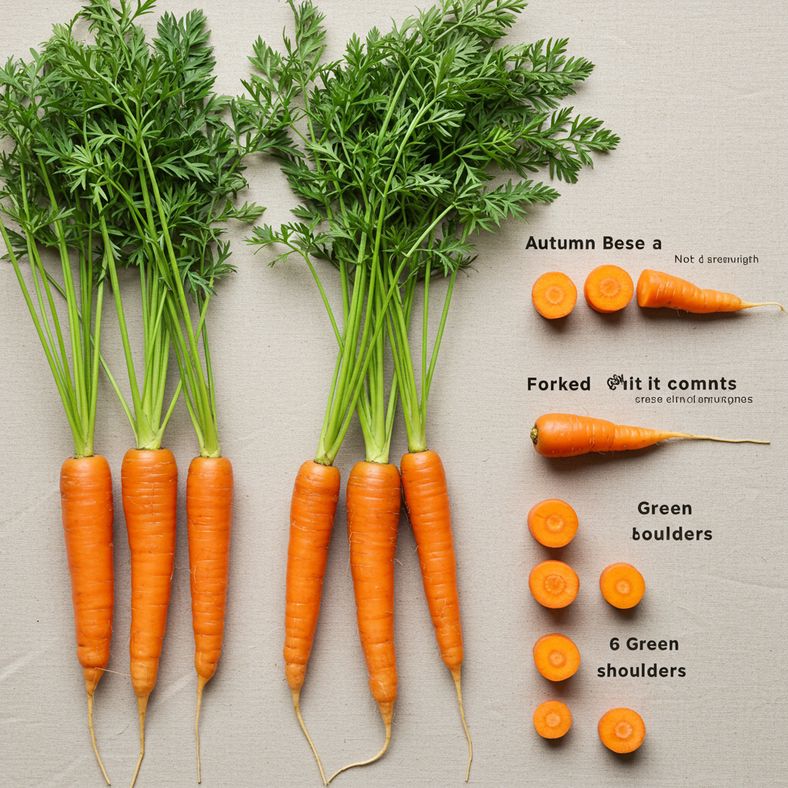
Despite careful planning, autumn carrot crops can encounter various challenges requiring prompt attention and appropriate solutions. Understanding common problems and their remedies ensures successful harvests.
Poor Germination: Often caused by dried-out soil, old seeds, or soil temperatures below 10°C. Ensure consistent moisture throughout germination period and consider pre-germinating seeds indoors. Fresh seeds typically show 80-90% germination rates compared to 50-60% for two-year-old seeds.
Forked or Twisted Roots: Usually results from stony soil, fresh manure, or root damage during cultivation. Prepare soil thoroughly, removing stones and avoiding fresh organic matter. Once established, avoid disturbing soil around developing roots.
Splitting: Occurs when irregular watering causes rapid growth after dry periods. Maintain consistent soil moisture throughout the growing season, mulching to reduce water loss and using drip irrigation where possible.
Green Shoulders: Caused by exposure to light when root tops push above soil level. Earth up around exposed roots or ensure adequate soil coverage during planting. This cosmetic issue doesn't affect flavour but can indicate bitter compounds in affected areas.
Cavity Spot: Small, brown lesions on roots indicate calcium deficiency or waterlogged conditions. Improve drainage and consider lime application if soil pH is below 6.0. Ensure adequate calcium availability through balanced fertilisation.
Soft Rot: Bacterial infection entering through wounds or pest damage. Avoid damaging roots during cultivation, control pest populations, and ensure good air circulation around plants. Remove affected plants immediately to prevent spread.